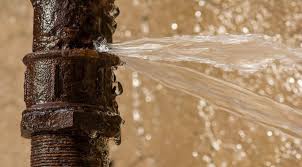Dealing with a window water leak can be frustrating and damaging to your home if left untreated. Whether it’s due to aging seals, poor installation, or harsh weather conditions, addressing the issue promptly is crucial. In this guide, we’ll walk you through the steps to identify, diagnose, and repair window water leaks effectively.Common Causes of Window Water Leaks
- Damaged Weatherstripping: Over time, the weatherstripping around windows can wear out, allowing water to seep in.
- Cracked or Broken Seals: Double-pane windows rely on seals to keep moisture out. If these fail, leaks can occur.
- Improper Installation: Windows that aren’t installed correctly may have gaps or misalignments that let water in.
- Clogged Drainage Channels: Many windows have small drainage channels to divert water. If these are blocked, water can pool and leak inside.
- Structural Settling: As your home settles, window frames may shift, creating gaps where water can enter.
How to Identify a Window Water LeakBefore you can fix a leak, you need to confirm its source. Here’s how to identify a window water leak:
- Inspect the Window Frame: Look for visible cracks, gaps, or signs of moisture around the frame.
- Check for Condensation: Excessive condensation between panes or on the glass may indicate a failed seal.
- Examine the Surrounding Walls: Water stains or peeling paint near the window can signal a leak.
- Test with Water: Use a hose to spray water around the window and observe where it enters.
Steps to Repair a Window Water LeakOnce you’ve identified the leak, follow these steps to repair it:
- Replace Damaged Weatherstripping: Remove the old weatherstripping and install new adhesive-backed strips to create a tight seal.
- Re-caulk the Window: Scrape away old caulk and apply a fresh bead of waterproof caulk around the frame.
- Clear Drainage Channels: Use a thin wire or compressed air to unclog any blocked drainage holes.
- Repair or Replace Broken Seals: For double-pane windows, consider professional help to reseal or replace the glass unit.
- Adjust or Reinforce the Frame: If the frame is misaligned, use shims or screws to secure it properly.
Preventive Measures to Avoid Future LeaksTo minimize the risk of future window water leaks, consider these preventive steps:
- Regular Maintenance: Inspect and clean your windows annually to catch issues early.
- Upgrade to High-Quality Materials: Invest in durable weatherstripping and caulk designed for long-term use.
- Ensure Proper Installation: Hire experienced professionals to install or replace windows correctly.
- Monitor Indoor Humidity: Use a dehumidifier to reduce condensation buildup, which can weaken seals over time.
When to Call a ProfessionalWhile many window water leaks can be fixed DIY, some situations require professional assistance:
- Extensive Structural Damage: If the leak has caused rot or mold in the frame or wall, a contractor may be needed.
- Persistent Leaks: If repairs don’t stop the leak, there may be an underlying issue only a pro can diagnose.
- High-Risk Locations: For windows in hard-to-reach areas or upper floors, hiring a professional ensures safety.
ConclusionWindow water leak repair is a manageable task with the right tools and knowledge. By identifying the cause, applying the appropriate fixes, and taking preventive measures, you can protect your home from water damage. For complex issues, don’t hesitate to seek professional help to ensure a long-lasting solution.

